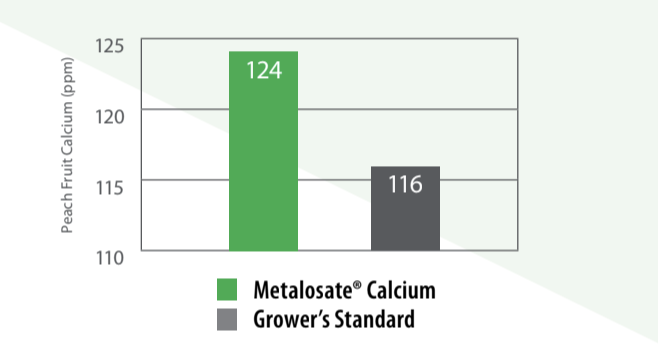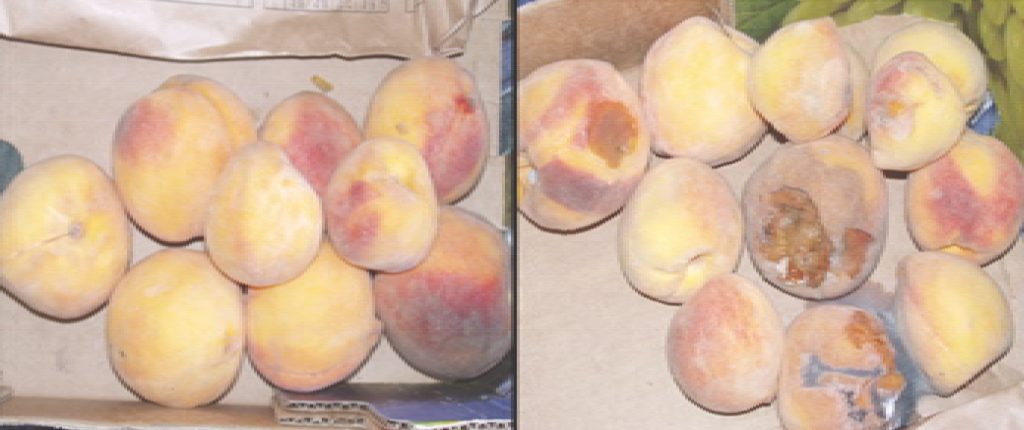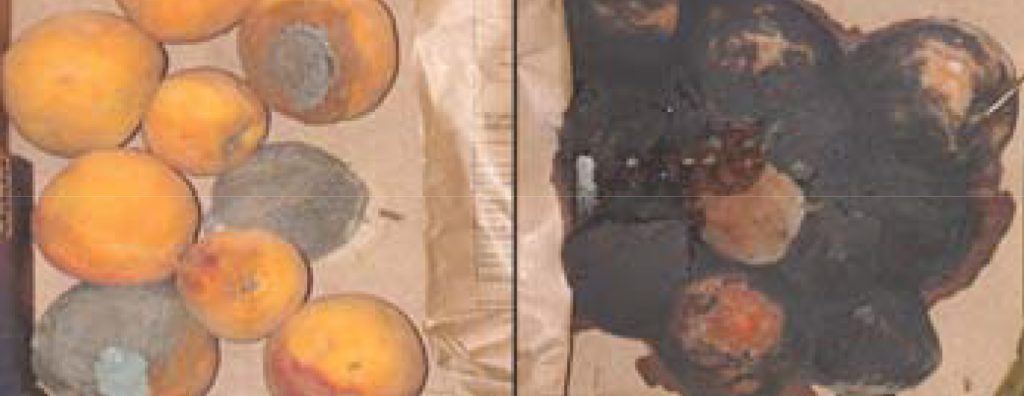
Introduction
Researchers and farmers are constantly looking for ways to improve shelf life and firmness of fruit. At times, the processing plant cannot keep up with the volume of peaches picked during the day, and the peaches have to wait until there is space available. Often the fruit that has to wait more than 24 hrs is rejected as a result of decreased fruit firmness.
Materials and Methods
In this trial, three applications of Metalosate® Calcium were applied at 1 L/Ha (14 fl. oz/acre) per application 40 days, 30 days, and 20 days prior to harvest on the Ross variety of processing peach. This was compared with the grower’s standard application of 2 L/Ha (27 fl. oz/acre) of a calcium carboxylic acid product that was applied 3 times at 40 days, 30 days, and 20 days prior to harvest.
Fruit calcium levels were measured at harvest, and fruit was randomly selected from bins within the grower’s standard treatment and from the Metalosate® Calcium treatment. This fruit was placed in a warehouse without cooling and pictures were taken at 1 week and 2 weeks following harvest to compare the rates of breakdown between the two treatments.
Results and Discussion
When looking at Figure 1, one can see that the calcium levels in the Metalosate® Calcium treated fruit were higher than those of the grower’s standard program. These higher calcium levels contributed to a slower breakdown of the Metalosate® treated fruit when compared to the calcium carboxylic acid treated fruit. This is demonstrated in Figures 2 and 3.
Similar trials have been conducted in Mexico on fresh eating peaches where shelf life doubled.
This is another example of how the Metalosate® products outperform other micronutrient formulations on the market. For additional information on this experiment and for crop-specific programs in your area, please contact your local Balchem Plant Nutrition representative.
Figure 1: Apple Leaf Zinc Levels

Figure 2: Peach Breakdown After 1 Week

Figure 3: Peach Breakdown After 2 Weeks



